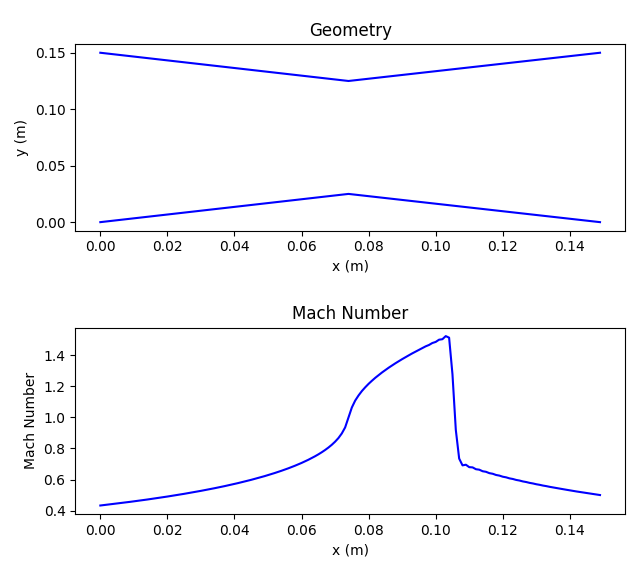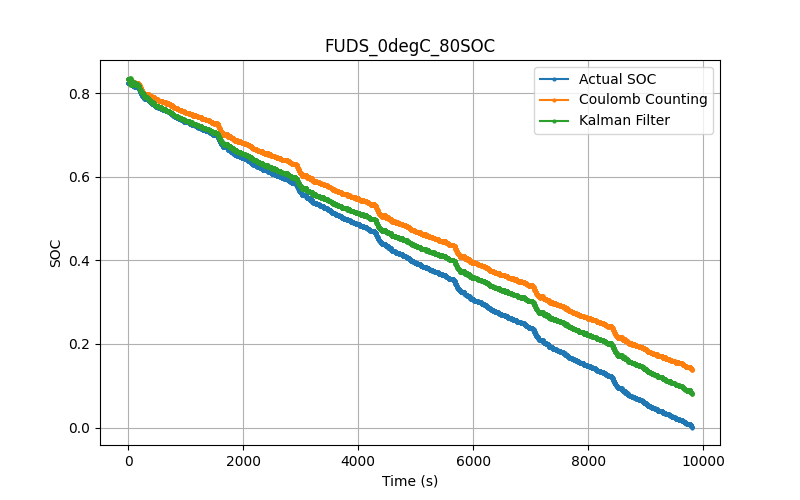Modeling
This page looks at some of the modeling projects I have done. These projects were motivated by wanting to learn new mathematical techniques, interest in capturing physical phenomena, and learning how to implement numerical techniques.
The pojects found below are:
- CFD project: A description of the project and the end objective
- Kalman filter: A description of the project and the end objective
Click on a specific project to learn more. Each project has a brief description on what you can find in each one.
CFD Project
CFD has always interested me with its combination of physical modeling and numerical integration. With this project, I wanted to see if I could build my own CFD model to test my understanding. Currently, the model is only a 1D model where the user can specify inlet and outlet conditions and enter simple geometries (converging, diverging, converging-diverging). The area is symmetrical along the axial direction. Currently, the model uses ideal gas equations, so it is only valid for fluids that can be modeled as ideal gas.
The goal is to eventually expand to 2D, where I can look at more complicated geometries and find the full flow field for the simple geometries used in the 1D model. The current model is written in Python, but C++ will be evaluated for writing the 2D model.

Kalman Filter
This project was motivated by a conversation with a work colleague where we were discussing how a measurement used in engine control was noisy and the control would end up using the model value instead of the measurement. I came across the Kalman filter on a previous project and this seemed like another application where it could be implemented.
Here, I revisit the Kalman filter and build it out to test my understanding of the filter, its derivation, and any practical challenges in practically implementing the filter.
I learned a few things about how to better organize this project so hopefully this is a little more clear than the CFD project. Overall, it was cool to experiment with the Kalman filter. It’s clearly a very ingenious idea but it can be challenging to tune (which I get into but don’t explore too too much)

